Back in the beginning of Batman there was another bat-themed vigilante, the Black Bat. There was some talk of lawsuits, but nothing interesting came out of that.
The Black Bat was created in 1939 to star in Black Book Detective. He was D.A. (not a joke) Anthony Quinn (not a joke) who was blinded and disfigured (not a joke) when a crime lord had acid thrown on him (now it’s a joke). So he is not only a bat-themed hero, he is the first blinded superhero (he got sight) and precedes Dr Mid-Nite and Daredevil.
But it is the bat-theme that was so definable a niche in the market that one could crowd the other out. Today, every bat-themed hero is Batman or someone attached like Batgirl, Batwoman, Nightwing, etc.
And that’s how it worked with Spider-Man. Every other spider-themed hero – Spider-Man (Miles Morales), Scarlet Spider, Spider Gwen, Silk, Spider-Woman – is connected to him except one. You’d have to be pretty brave now to create either a bat- or spider-themed superhero. Juries and judges alike would be quick to take it as infringement, and the market would be likely to take it as not worth buying. Then again, it has been done.
But once upon a time – well, twice but the second time wasn’t that interesting – there were a number of superheroes with a spider theme.
It started with the Spider in 1933. He was created to be a competitor to the big guns of the pulps: Doc Savage and the Shadow. So when people complain movies are made to be blockbusters, that’s nothing new. The Spider worked, in that it became the third biggest seller in pulps.
The Spider appeared in The Spider; in comic book terms, he debuted in his own title just like Captain America did eight years later. But for much of his career, the theme was nominal. He was called the Spider, but that was it.
He wore a tuxedo, a fedora, and a large domino mask, and a dark cape. If that sounds familiar, it’s very much like the pulp version of the Shadow. Not the radio show version but the pulp version. The parallels were made stronger by the main weapons the Spider used: twin 45 automatics, again, just like the Shadow.
Both men were millionaire playboys who put on costumes to fight crime. Both had served in the military in World War I. Both were affiliated with the police, but there was neither a spider signal or a shadow signal.
However, the Spider would also wear make-up instead of a mask, including make-up to make him look like a vampire. He shot his villains dead. He even faced villains like the Bat Man and the Iron Man. He was a typical pulp hero.
But three things happened. The Spider got a new device. This was a silken line (the Bat-rope was originally called a silken cord) which could hold his weight. He started marking the corpses of the people he killed with a red stamp. The stamp, hidden in a cigarette lighter, was a spider. He marked the corpses to declare he killed them, so no one would be blamed for his actions. He would later mark a ring with the spider which people could use as a distress message.
It was the third thing that tied the Spider to spiders, just as you would now expect. And it basically came about because of the two movie serials with the character. The first of these was in 1938, had fifteen episodes, and was called The Spider’s Web.
People complain now that comic book characters look different in the movies. It happened back then, too. Zorro went from wearing a sombrero and a kerchief mask to the sombrero cordobés and soft cloth domino mask or cowl. They also added a cape. It was a much better look.
The Shadow went from a suit, fedora, and cape to the slouch hat, tuxedo, mask and cape we know today.
In the same way in movies Captain America’s mask is a helmet, Wolverine starts out in black leather, and the Scarlet Witch gets to cover up her butt for once.
The changes to the Spider’s costume were even more radical and became definitive. The hat now had a spider insignia on the front of the band. The mask now covered the whole of the face and his cape did not fly from his shoulders but covered them. More than this, mask and cape were marked with a series of white lines like a spider’s web. It made him a truly spider-themed hero.
But the serial did not use the silken line. So the look remains but the silken line is gone.
The pulps would turn the costume lines from white (necessary in black and white films) to red. And that would be his costume forevermore. Well, until 1943, when the pulp series was canceled. Apparently this was as much war-time paper shortages and a government dislike of the mass destruction his stories entailed (commonly his stories saw the deaths of tens of thousands) as any drop in sales.
And that was it for the Spider, except when he was revived. From the seventies on his novels have been reprinted in short bursts. In the 1990’s Eclipse comics put out a new series. And since then there have been sporadic revivals from Dynamite Entertainment, notably in a solo series and the ensemble series, Masks.
In 1940 a new spider-themed hero arose. He was called the Spider, but almost no one knows him by that name. Instead he is called by the name of the strip he was in, Alias the Spider.
Actually, he had only two connections to spiders. His bright blue pirate boots each had a black spider printed on the front of the flap. This is the only time I can find a superhero’s insignia on his boots rather than his chest, belly, or cape. The other thing he did was loose an arrow that, when it hit his target’s hand, left a mark of a spider.
In this the unoriginal Spider is perhaps the first archer hero to use trick arrows (he also had a magnesium arrow for light) since his archer predecessors, the Arrow and the Golden Arrow, didn’t have trick arrows. That came with the later Green Arrow, but not when he started out. So the unoriginal Spider was an original archer, but we don’t notice that.
The Spider was published by Quality (kind of a bad joke, there) and when that company was bought by DC, DC didn’t use him and he fell into public domain. Public domain didn’t seem to want him either. But he was resurrected in new form, and this time he was not a hero. The retcon was he caught all those crooks to get rid of the competition. The Spider was a crime lord. So he was, finally, a spider-themed character. After all, he was drawing people including readers – into his web.
But he still sucks.
Still in 1940, what would become Marvel came up with another spider-themed character. She was a fake psychic who died, went to hell (as you do), and was told by Satan himself to go kill bad people so Satan would get their souls earlier than if he let them die natural. So, is ten years that big a deal? Is there some payoff for this? It seems to be Hellporn and nothing more.
The woman, Claire Voyant (not my joke, the comic’s joke maybe, but not mine), gets dubbed the Black Widow, and from then on she goes out and kills people. When she kills someone she puts her hand on his (always a he) forehead and when she removes the hand from the corpse, surprise, there’s a tattoo of a spider on it.
In the same way, she has a costume which has a spider on the stomach of the costume. Kind of like Mr Terrific’s “Fair Play’ slogan. She did not last long but her obscurity helped because it was why she was revived for a good graphic novel, The Twelve.
Then, in 1941, an actual spider-themed hero who had spider themes was created by DC. He was John Law (not kidding), a detective novelist who decided to put what he wrote into practice, which means he had a high opinion of what he did. He designed a yellow costume with purple cape, trunks, and mask. It was very similar to the Sandman’s second and really lousy costume to the point they had to retcon why the two costumes were so much alike.
He put suction cups on and they let him cling to walls, meaning they could each hold something between about 200 pounds. He had a webgun; a handgun which shot out nylon and glue. He could use that web to swing from one point to another or to ensnare a bad guy.
He didn’t have a spider symbol, but with his name and themed devices, he didn’t need one. He was Spider-Man – in fact, some letterer seems to have made a mistake and a radio in the comic referred to him as “Spider-Man”. Apparently with that spelling, with the hyphen.
The Tarantula didn’t last long. If he had, the Spider-Man we know now might never have existed.
He was revived as part of the All-Star Squadron and given a new and better costume. It now has a stylized tarantula centered on his chest. Its legs go further than that. All in all it’s a good costume.
Then they hammered him into a Nite Owl plot of starting writing after he retired from crime fighting and writing an autobiography of his super-hero days to dying in an apartment in his old age.
Also like Nite Owl, he has a successor, Catalina Flores. She is still a minor character who should have a better chance, but the same can be said for the original Tarantula. This seems to be a character designed to keep a trademark in force.
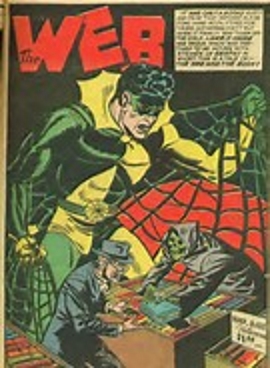
The national and sporting colors of Australia and South Africa are yellow and green – because of the flowers.
The Web is an American.
In 1942, MLJ (later called Archie Comics) jumped into this tiny pool with the Web. Kind of a spider-themed character, and kind of not. He has been revived through the years and Archie Comics tried to get into superhero comics again.
He wore a yellow and green costume and had nothing to do with Australia or South Africa. His only spider reference was catching people in his web and the second time he was revived this was abandoned. Now he had armor that gave him superpowers and by web he meant the internet. MLJ/Archie never knew how to do superheroes because they always followed trends that someone else had already set.
The only original element to this hero was his wife, who was boss in the relationship. Did not, would not, make the comic sell. Antagonistic marriages do not sell comics. If she just had the lead that might have worked.
Nonetheless, the Web has been revived a number of times all from brief periods. MLA/Archie did lease their superheroes to DC, but DC couldn’t make a go of them either.
Also in 1942, Quality Comics created a character called the Spider Widow. A bored, wealthy athlete decides to fight crime because she discovers she can control black widow spiders. So she dresses up in a green witch’s Halloween mask, long dress, and pointed hat.
No explanation what this was all about. No consideration how many black widow spiders are around, how fast they can move, or that they are nocturnal, or that the males are not poisonous. Just the females.
What led someone to think this mishmash of ideas that didn’t fit together should be put together to make lousy stories?
She lasted about sixteen months and the only thing spidery about her was her name and her control of spiders. Other than that she was a Halloween witch. DC bought the character and never once used her. Remember that next time you complain about DC not knowing what it’s doing in movies.
In 1943 Fox Feature Syndicate created the first character called the Spider Queen. She wore a red skirt and mask, bare legs, blue shirt cut to the navel, and yellow cape and boots. She also wore bracelets that basically squirted web-fluid. She didn’t last long, and with so little to make you want to read her stories, that’s probably not a bad thing.
After all, Marvel later revived her for one of those ‘we don’t respect this character’ stories where they can do anything they want someone out of continuity and in whom they’ve invested no money.
And after that the spider theme was done for heroes until Spider-Man. It was used a lot for various villains, but for heroes it was over. Once Spider-Man came in he dominated the idea and, like Batman, a whole slew of spinoffs came about.
Spider-Man, Spider-Woman (several versions), the Scarlet Spider, Spider-Man 2099, Ultimate Spider-Man, Spider-Gwen, Silk, and Spider-Girl. Every one a version of Spider-Man except two.
There is Spider-Girl of the Legion of Superheroes. She is a Medusa clone whose hair is prehensile. When the Legion is framed she jumps to the good side and calls herself Wave. A very low-level hero who seems to already be gone.
There is one other. Able to climb walls, swing on a thread, and sting like a spider. She is the Black Widow, Natasha Romanova. She is the holdout as an alternative spider-themed hero, And she’s in Marvel.
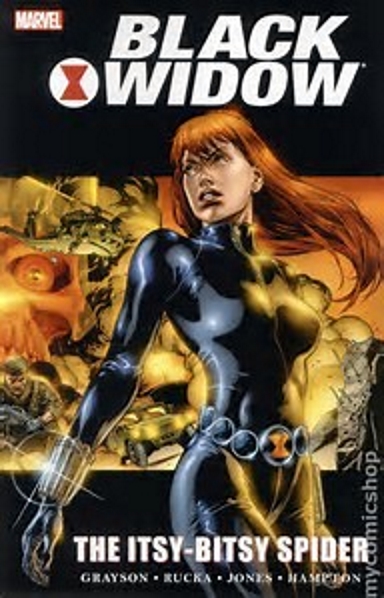
Those who didn’t think of him probably thought of her, and in many ways she is in a better run than he is, right now.
DC does have the option of bringing back the Tarantula. Done well, I think it would pay. But Marvel has a second spider-themed hero who is doing fine.
The original Spider is still done from time to time in Dynamite, but Dynamite does comics in limited series, with a beginning and end and a pause before they come up with another story and they are about 1.5% of the total comics market.
The unoriginal Spider is still used as a villain in DC sometimes.
But there is a version of Spider-Man who has never been used: the original. When Lee and Ditko (or maybe Kirby and Simon, there’s dispute about this) were working on the creation of Spider-Man, he was originally to have had a magic ring that would give him the spider powers we are familiar with (more or less). The idea was dropped, but the ring might be used in future stories with a different Spider-Man or a different Spider-Woman, or one who becomes the other with the ring. After all, male black widow spiders are not poisonous, only the females. Then again, the Black Widow might have to defend her small corner of the market.

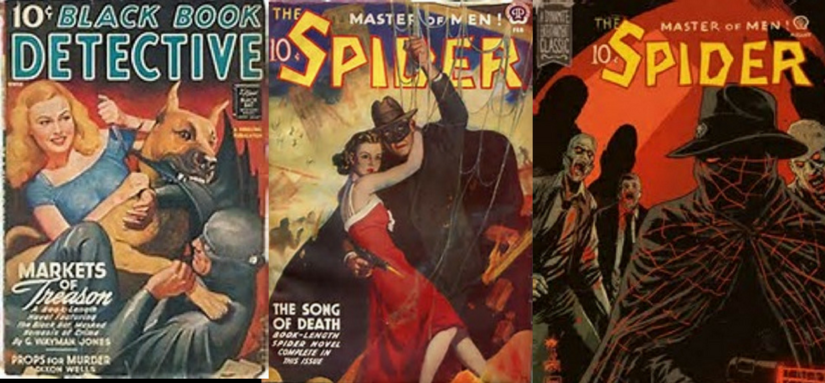
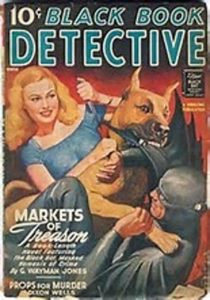
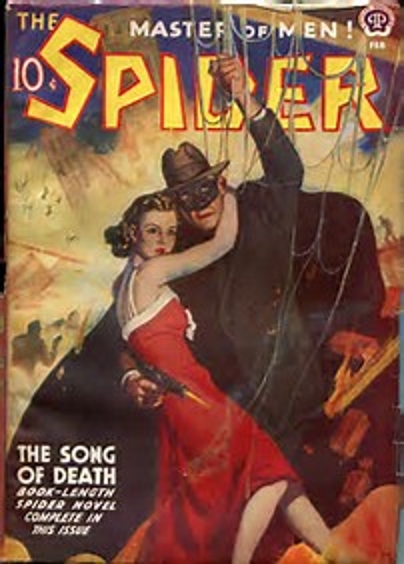

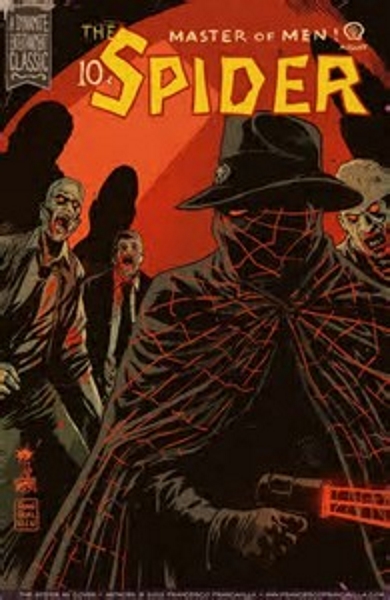
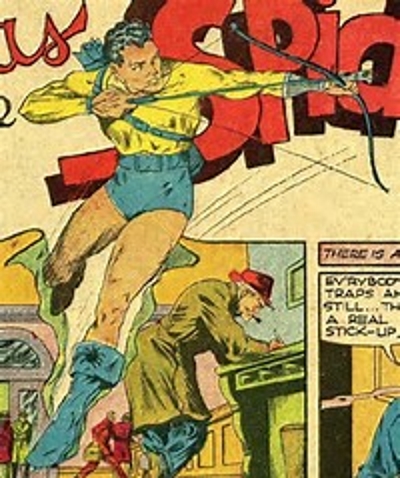
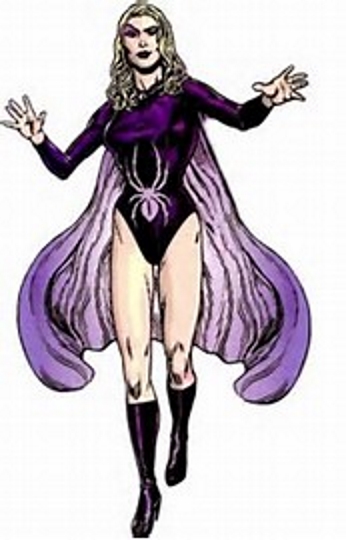
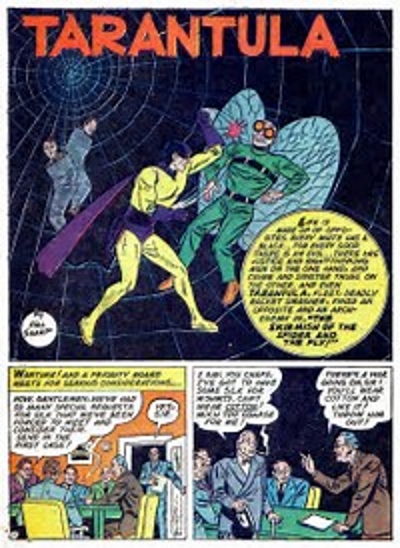
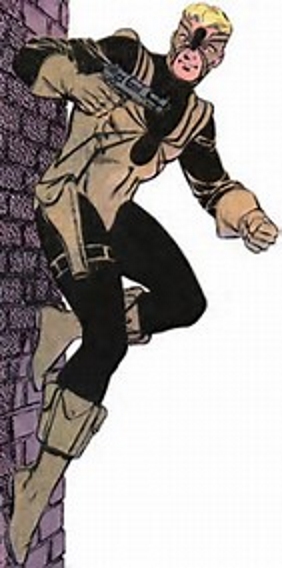
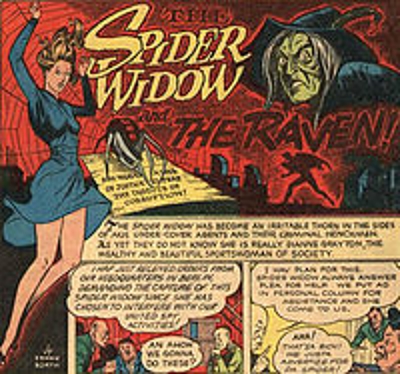
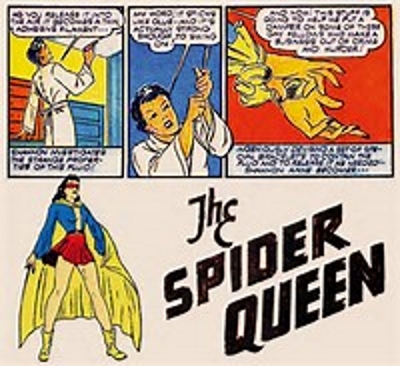

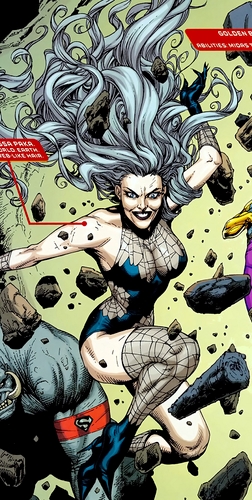
Comments are closed.